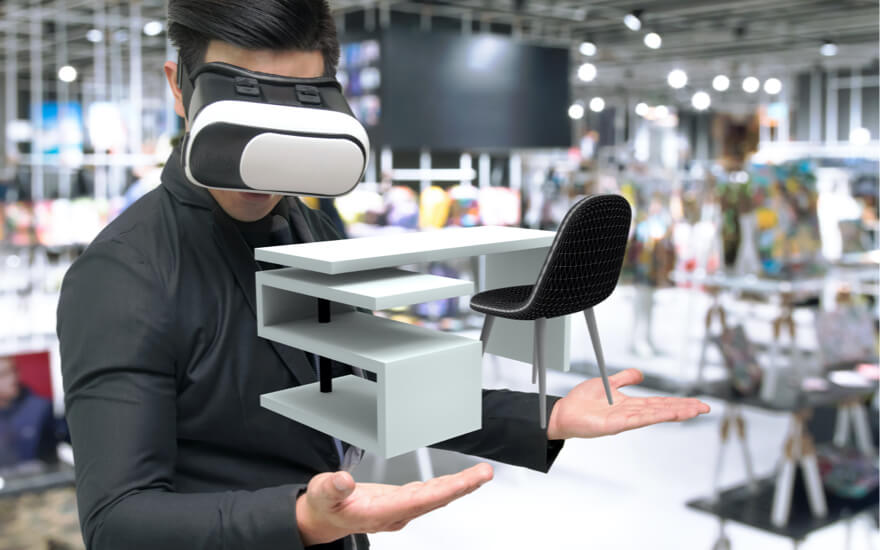What will stores look like in the future? 5 concepts
Published on 08/12/2020 in Inspire
Big brands no longer determine what we buy. The consumer has control. This paves the way for innovative retail concepts. ‘The Future of Shopping’, a retailer’s laboratory, offers a glimpse of the store of the future in Antwerp.

According to retail expert Jorg Snoeck, buying large quantities and distributing them to as many retail outlets as possible is a thing of the past. “That ‘one size fits all’ model no longer works. We are evolving into a technological world. Those who cling to old patterns will get in trouble.”
You can discover what that future might look like in Antwerp. ‘The Future of Shopping’ – a laboratory for B2B and B2C retailers – is opening in the Stadsfeestzaal on the Meir. Visitors are introduced to future-oriented concepts that respond to the evolutions within the retail landscape.
1. Customer analytics
The anonymous collection of customer data allows the retailer to closely monitor who is visiting a store when. This translates into a retail dashboard with which they can make and implement well-founded decisions. For example, does the retailer notice that the store attracts more young people at specific times? Then they can adapt the music and the video walls to this.
Retail dashboard
In rapidly changing times, in-depth customer insight is a crucial success factor for any business. The retail dashboard groups, analyzes, and visualizes data from data sources, allowing retailers and other businesses to make informed decisions.
2. The Living House
There is a bathroom constructor, as well as a kitchen designer and a floor specialist, in The Living House. The client can design their dream interior based on advice from these experts. This way, the various brands and companies join forces to co-create a customized, entire interior.
The Living House uses technological visualizations and augmented reality to visualize the dream interior. For example, the visitor browses through the digital catalogs using virtual hands to personalize their interior.
3. Electronic Shelf Labeling
Store shelves and vending machines are equipped with electronic shelf labeling or digital price indications. This allows the retailer to adjust the price quickly and remotely. For example, the price of a product drops as its shelf life approaches its end. The consumer chooses the ideal moment of purchase: the longer they wait, the cheaper it is. But also, the bigger the chance that someone else gets it first.
Gedimat La Vallée, a construction materials dealer, had its 900 m² warehouse equipped with Electronic Shelf Labeling (ESL)
4. Digital- & mobile-enabled store staff
Devices help improve customer service. Is the correct size of a garment no longer on the shelves? An employee can then use a tablet to find out whether they still have the right size in stock.
Digital tools can also help to attract and train employees. This includes things like tutorials: movies that show how to complete certain tasks or acquire skills. Anyone who has followed these instructional videos is ready for the next step in their application or work process.
5. Citchen
You used to offer the choice between meat and fish at family parties. Now, there is gluten-free, vegan, vegetarian, halal, and many other variants to consider. This ‘blurring’ and hyper-personalization is translated into Citchen.
Citchen is both a catering company and a culinary academy. The consumer sees the chefs at work. They can choose to eat the dishes on the spot, to make them at home, or to have them delivered.
Discover The Future of Shopping
How will retail continue to evolve?
Do you want to offer your customers the best shopping experience?
One
One magazine is the Proximus B2B magazine for CIOs and IT professionals in large and medium-sized organisations.